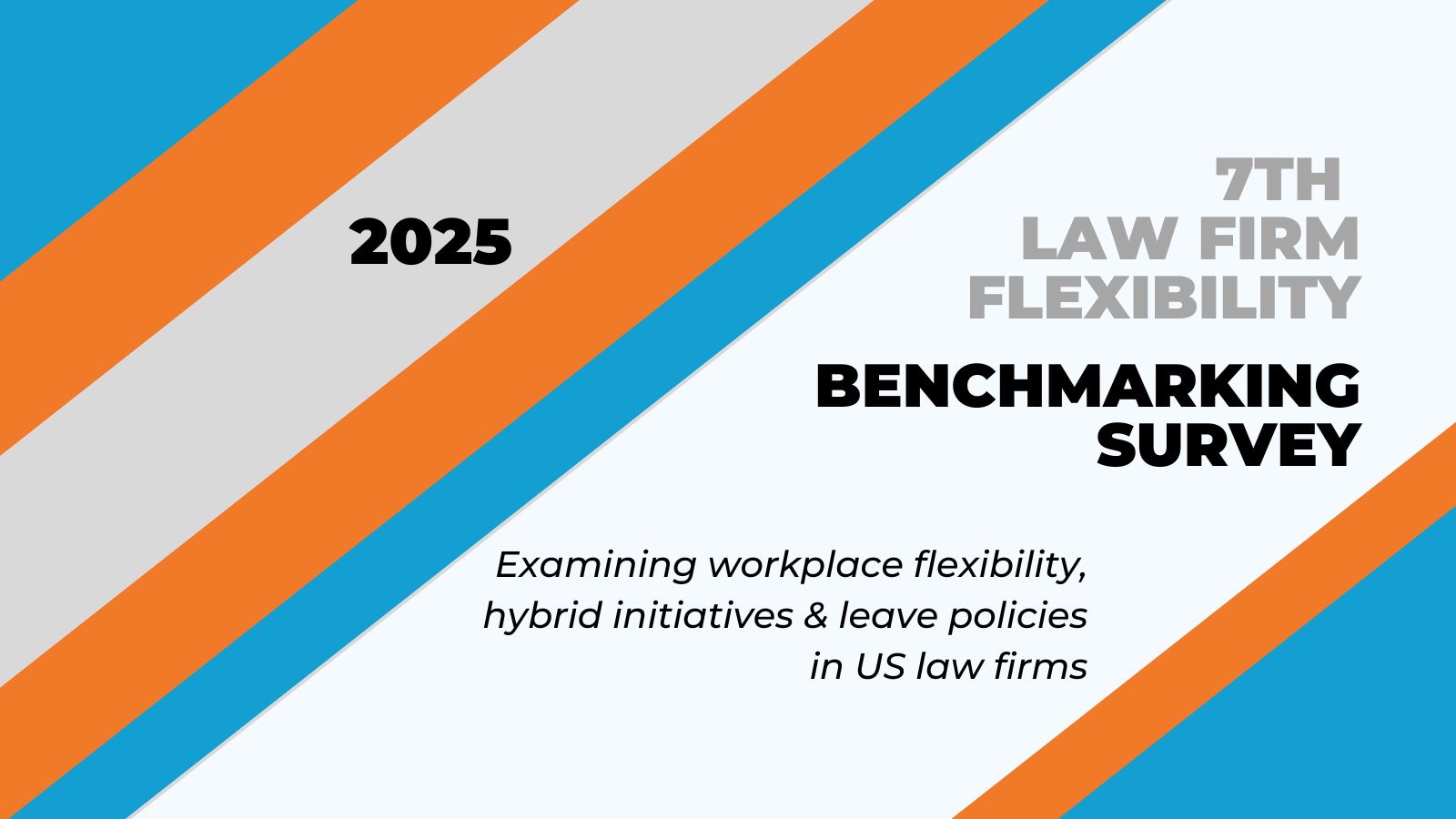 The Alliance invites you to participate in our 2025 Law Firm Flexibility Benchmarking Survey, which examines the types of workplace flexibility, hybrid, and leave policies that law firms have implemented for employees and the types of support available for those who work flexibly/hybrid.
The Alliance invites you to participate in our 2025 Law Firm Flexibility Benchmarking Survey, which examines the types of workplace flexibility, hybrid, and leave policies that law firms have implemented for employees and the types of support available for those who work flexibly/hybrid.
Why take the time to complete the survey? Because the data we collect from you and other firms allows us to analyze industry-wide trends and provide valuable insights on workplace flexibility, hybrid work, parental leave, and well-being policies. These are the areas firms are actively seeking guidance on, and your participation helps ensure that the results are as meaningful and actionable as possible.
Why this matters for you:
- See where your firm stands on flexibility, hybrid work, parental leave, and well-being compared to industry trends.
- Get exclusive insights from the completed confidential benchmarking report packed with key takeaways and best practices.
- Be considered for recognition in workplace flexibility and parental leave based on Alliance best practices.
Organizations say one of the most valuable Alliance initiatives is the benchmarking data—it helps firms see where they stand and how they compare to others in the industry. Your input makes that possible. The more firms that participate, the stronger the insights. Let’s work together to build a clearer, more useful picture of what’s working.
Survey responses will be analyzed and aggregated, and responses will be kept confidential. A report will be published for Alliance members and survey participants containing industry trends, best practices and insights learned, which organizations can leverage to make meaningful changes and publicize their successes.
The deadline to participate is March 21, 2025.
Contact Sejal Shah for access to the survey or with any questions.


 The 6th
The 6th